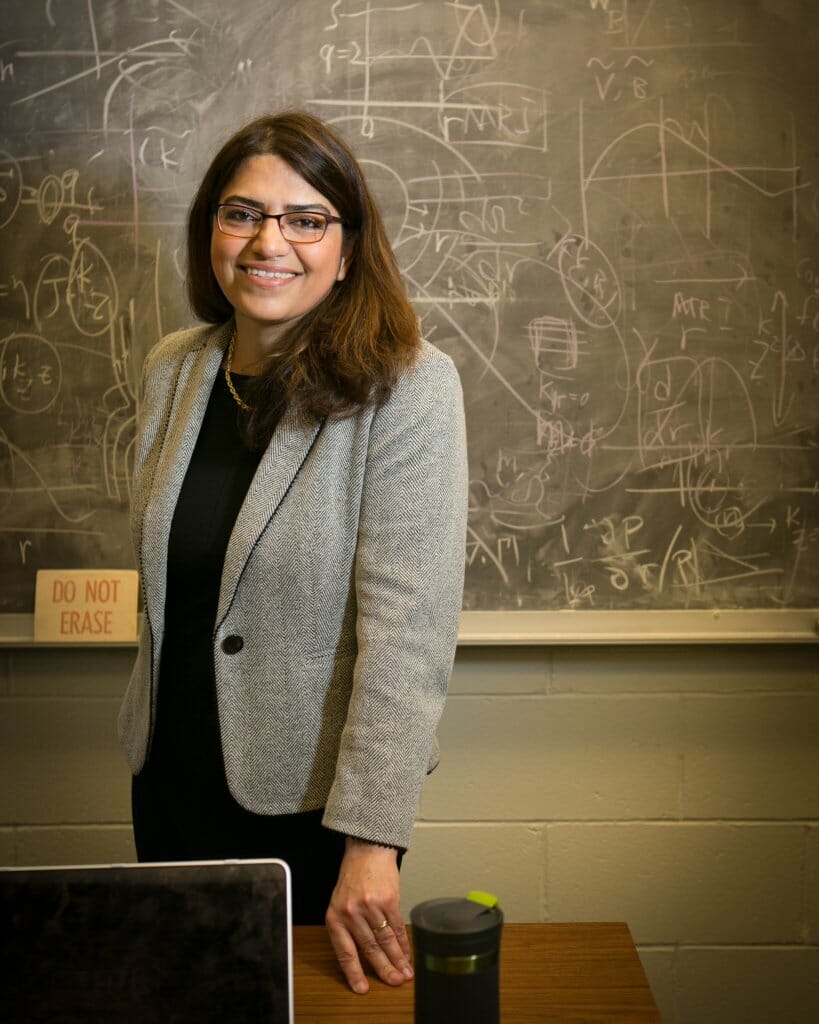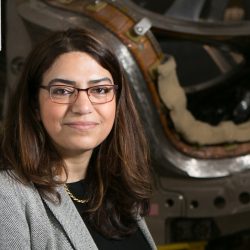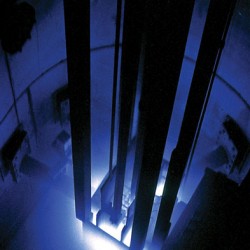Clean Energy at Last?
Physicist Fatima Ebrahimi PhD’03 sees hope in a recent breakthrough in nuclear fusion.

Nuclear fusion avoids the carbon emissions associated with fossil fuels and produces less radioactive waste than nuclear fission. Julie Brown Harwood
In December, scientists at the Lawrence Livermore National Laboratory’s (LLNL’s) National Ignition Facility in California achieved a breakthrough in nuclear fusion, a process by which the sun creates its own energy. Unlike nuclear fission, which is used in today’s power plants and creates radioactive products, fusion has the potential to provide the world with a clean energy source. For the first time in a laboratory, the LLNL scientists successfully produced more energy than they put into the experiment. Although she wasn’t involved with the LLNL experiment, Fatima Ebrahimi PhD’03, a fusion researcher at Princeton University (see “A Driving Force,” On Wisconsin Summer 2019), says that the breakthrough indicates a fusion-fueled future for humankind.
Why is nuclear fusion important?
It’s one of the best ways to get an unlimited source of energy for now and for future generations. It has a lot of advantages in terms of making an abundance of energy, and it’s carbon-free.
What is the significance of LLNL’s breakthrough, and what might its implications be?
It’s a milestone, physics-wise, because physicists and engineers have been trying to get a net gain in fusion energy for a while. So, this is a physics experiment that shows that yes, in fact, we can get a bit more fusion energy compared to what you put in the experiment.
What did you think when learning of the breakthrough?
It was exciting. It means that we see the light at the end of the tunnel; there will be a path to commercial fusion energy, to have reactor fusion-energy systems. It’s really a positive sign, but that doesn’t mean that this is necessarily the path.
How might this breakthrough affect your research?
It’s not going to directly impact my research because we have so many concepts we need to pursue. … There are many paths to fusion energy pursued at various institutions.
What challenges does fusion still pose before it can become commercially viable?
There are both physics and engineering challenges … [For example], the huge engineering challenge is how to effectively extract the heat produced by fusion and convert it to electricity.
Published in the Summer 2023 issue



Comments
No comments posted yet.